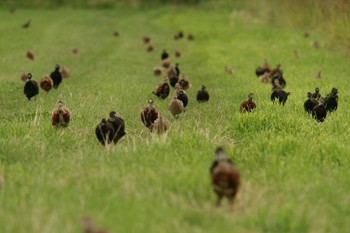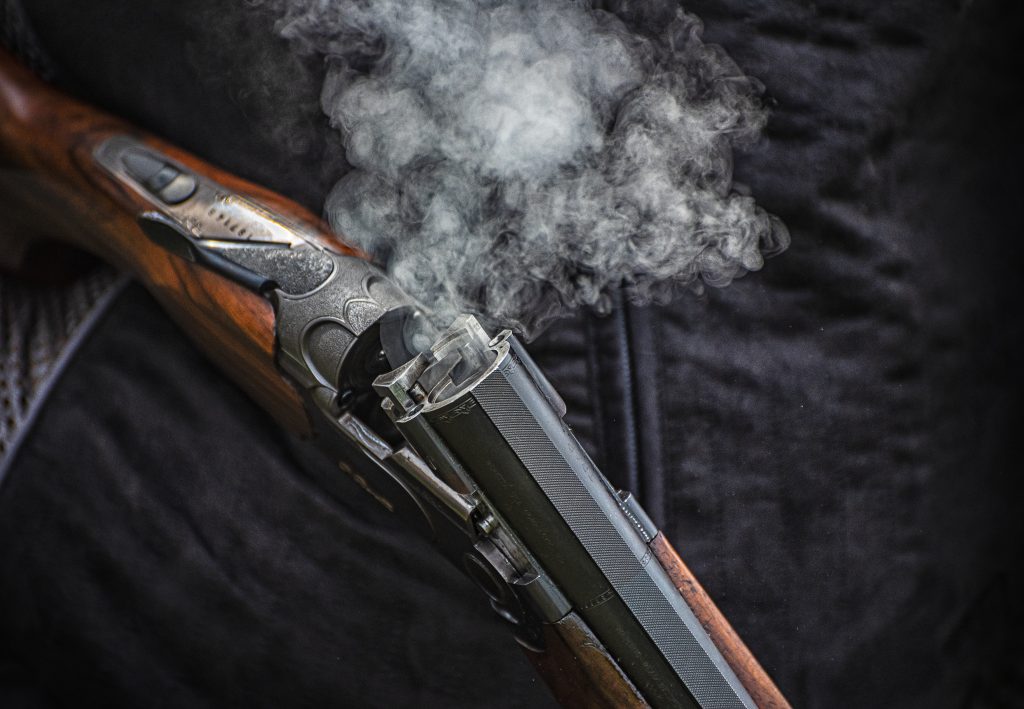Win CENS ProFlex DX5 earplugs worth £1,149 – enter here
Keeping gamebirds in top form
Keeping gamebirds in top formTips for ensuring gamebirds are healthy

After the wet weather last year, we all waited with eager anticipation for a long, warm summer this year. The start of 2013 did not seem to bode well, because spring was late and birds did not come into lay well. eports suggested that, in general, egg numbers were down and hatching was poor, though there were a few exceptions with some small flocks.
This trend also seemed to affect French producers, who reported poor egg production and continual rain, with no sunshine. Cocks were not performing and the eggs were not hatching as expected. It appeared that the jet stream was pointing over France, too.
To compound the shortages, the birds were not surviving well and there were several reports of chicks dying at around 10 days of age from a starve-out syndrome. This led to more chicks being required to replace the losses from what was already a short supply, and we were beginning to feel we were entering a black hole of supply.
Then the weather changed, egg numbers increased, supply met demand and the remainder of the rearing went well. There were low levels of disease and birds moved out to the release pens with relative ease.
The hot weather of July and August led to some problems with catching, but most rearers caught in the morning and the poults were delivered in to the pens in the early hours.
Worming strategy
Just when we had all relaxed, a wet spell reached us in August and we had an unexpected outbreak of gut and gapeworms. The worm burden had broken out just as the puddles replaced the dust. On many shoots, this coincided with the change on to wheat and feeding on the ground as the birds moved out of the pens. Many keepers had apparently been worming their gamebirds when the challenge was low and then not worming when the weather changed and the challenge became high. It was interesting to show that trail feeding in the same place year after year can result in high levels of contamination on the ground.
Treating birds with wormer before moving on to wheat is now becoming commonplace, as the problems with wheat feeding and worm infestation are becoming a cyclical event. We know worm eggs are resistant and can survive on the ground from one year to the next, therefore a robust worming strategy is important along with some adaptation for weather conditions.
I was also concerned that birds reared in conditions with no rain would then suddenly become challenged as the weather changed and we would see issues. This did not happen, because the birds adapted well, and luckily there were no disease challenges.
There have been a number of problems recently with partridges suffering from hexamita. This is a difficult problem to treat and prevention has to be the best approach. In many cases this is easier said than done but there are a number of important factors you should be aware of that can help avoid difficulties.
First, have enough feeders and drinkers on site and make sure they are kept topped up. See that the water is always clean and fresh. On several shoots I have visited recently, the water supply was stale and dirty. Ensure that the feeders are distributed about the edges of the pen and not just along the feed rides, to help spread the birds out. Try to remove puddles as much as possible because birds will often try to drink dirty water.
Second, get a plan of action from your vet. This need not be complicated but should involve a basic worming program, a feeding program and some suggestions on water quality. Part of the discussion with your vet should involve a simple veterinary health plan. This is now a requirement under the Code of Practice for the Welfare of Gamebirds reared for Sporting Purposes, which you can read online at the DEFRA website. This will also outline the records that you must keep.
When I speak to gamekeepers and farmers, there is a feeling that this code applies only to gamefarmers. This is not the case. Some of the shoots under our care in Scotland and in the north of England have been subject to DEFRA inspections, and they have so far complied. We all enjoy shooting and none of us wants to keep records, but a number are now required to allow us to demonstrate good practice and optimal welfare achieved.
Be vigilant
Throughout the winter shooting period it is vital to look out for signs of disease in your birds. This information can be gathered from many different sources. I often speak to beaters and they often report weak birds, “birds not making it to the Guns” or “not getting up” and being picked-up by the dogs. The beaters will notice the type of droppings and any changes in this may be associated with a change in weather.
Keepers will be aware of flying ability and this may be blamed on wind direction or air pressure, but in many cases it can be an early indication of disease. The keeper will also be aware of how much food is being used and, if vigilant, may record this.
Clearly, as each day’s shooting is finished the volume of food will drop but sudden drops can be an early sign of problems.
My last port of call is the gamecart from which I can gain a lot of knowledge. Examining the breeds shot is revealing in itself and, along with the drives shot and the shot ratio, you can gather much information during the season as to what breeds perform best on which drives. I also examine the birds’ body condition and score this from one to five. Any poor or obviously diseased birds can be diagnosed and measures put in place to control the problem.
At the moment, we are carrying out a simple survey looking at worm egg counts on birds on shoots with low-, medium- and high-performance birds to assess the impact of low levels of worms on birds’ flying abilities. This is carried out routinely in racing pigeon lofts. There is a direct correlation with flying performance and subclinical disease – that is, birds carrying an infection but not showing any signs of disease.
Careful observation of birds and their performance, the keeping of accurate records and the use of non-medicated additives in the water all help monitor and prevent sub-performance in your birds and enhance your shooting experience.
Related articles:
Choosing feed to keep your birds strong
Wheat alone is not enough to sustain a pheasant through the winter months
Related Articles
Get the latest news delivered direct to your door
Subscribe to Shooting Times & Country
Discover the ultimate companion for field sports enthusiasts with Shooting Times & Country Magazine, the UK’s leading weekly publication that has been at the forefront of shooting culture since 1882. Subscribers gain access to expert tips, comprehensive gear reviews, seasonal advice and a vibrant community of like-minded shooters.
Save on shop price when you subscribe with weekly issues featuring in-depth articles on gundog training, exclusive member offers and access to the digital back issue library. A Shooting Times & Country subscription is more than a magazine, don’t just read about the countryside; immerse yourself in its most authoritative and engaging publication.







